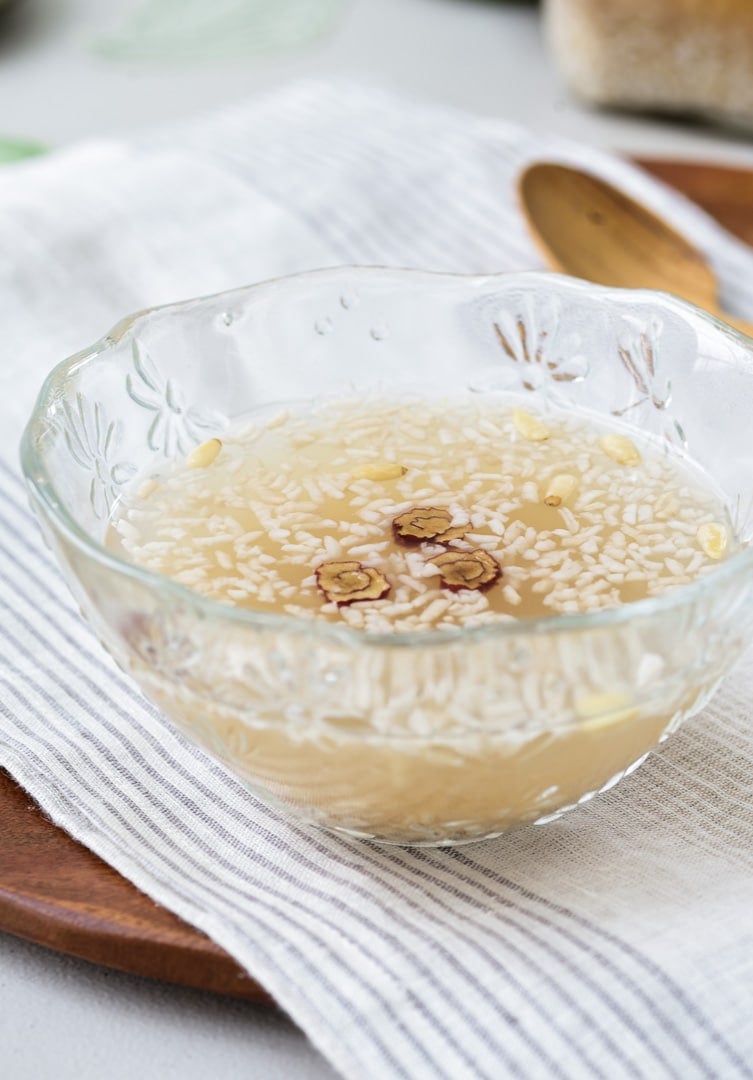Sikhye is a Korean traditional non-alcholic drink that’s made with barley malt and cooked rice. It’s refreshingly sweet and malty!
What is sikhye?
Known as rice drink or rice punch, sikhye (식혜) is a Korean traditional non-alcoholic beverage made with malt barley (yeotgireum엿기름) and cooked rice. It’s sweet and has a unique subtle taste of malt.
Sikhye is typically served as a dessert drink as it’s known to aid digestion. It’s a drink traditionally enjoyed on traditional holidays, such as Chuseok and Seollalafter heavy eating. You may also have seen it served after the meal as a complimentary drink at some restaurants.
This refreshing drink is highly popular as a thirst quencher on summer days. Half-frozen sikhye slush is so good to cool down with. Also, sikhye is a favored drink at jjimjilbang (Korean sauna/bathhouse), enjoyed after sweating in a hot sauna.
You can easily find commercially made sikhye in cans at Korean markets or on-line, but there’s nothing like homemade sikhye. It takes time to make it at home, but it’s mostly waiting time. The process is easy!
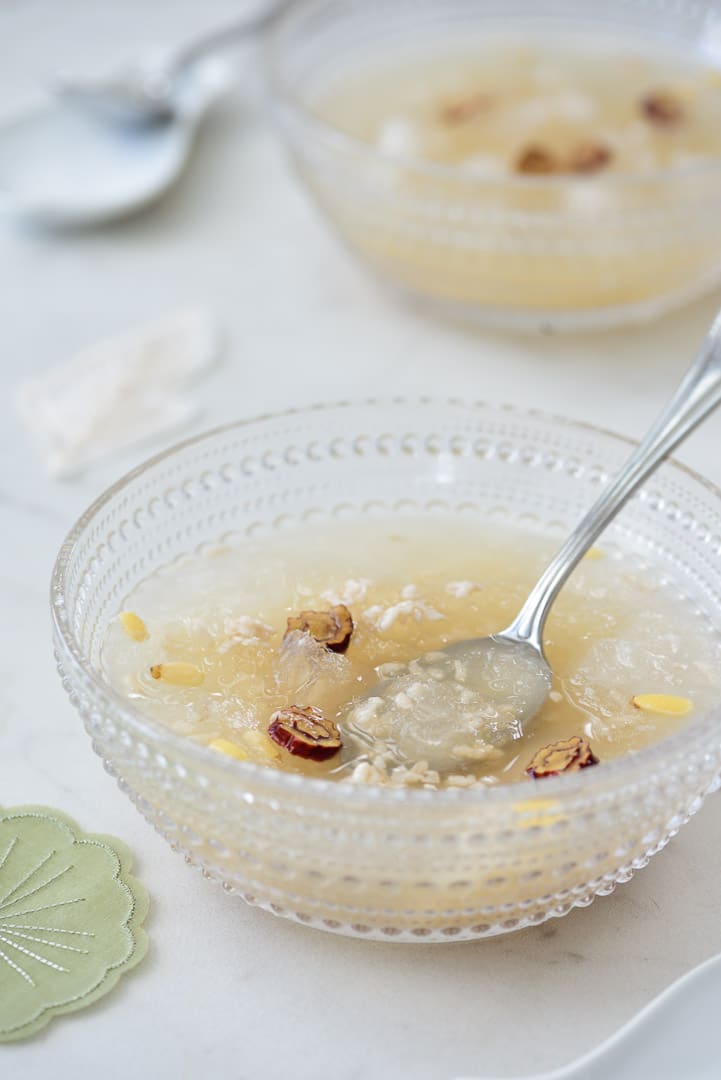

Sikhye Ingredients
The basic sikhye ingredients are barley malt (yeotgireum), cooked short grain rice or sweet rice (glutinous rice), water, and sugar.
Yeotgireum is barley that has been germinated/sprouted and dried through a malting process. It’s one of the main ingredients for gochujang. Barley malt usually comes in two different types in Korea. The first type is coarsely milled/crushed with the husks on, and the other type is hulled and ground into white powder. You can use either type to make sikhye. You can also use tea bagged malt barley, if available, as well.
A bag of yeotgireum, which is usually 500 grams, goes a long way, and I make two batches (about 20 cups/5 quarts/5 liters per batch or more sometimes) of sikhye with it. You can make 3 smaller batches if you want.
In this recipe, I use 24 cups of water, which yields about 20 cups of sikhye. However, this is highly flexible depending on how much you want to make.
How to make sikhye
Making sikhye is largely a 3-step process — making malt water, steeping cooked rice in malt water at warm temperature for hours, and briefly boiling everything together.
Making malt water
Soak the barley malt in warm water to extract its carbohydrates, enzymes, and flavor. Yeotgireum powder (coarse or fine) really doesn’t take long to hydrate and release its grain contents. There are two ways to make filtered malt water — a cheesecloth bag (or nut milk bag) or a fine sieve.
Using a cheesecloth bag (or nut milk bag): This is the easiest way. Simply put the malt barley in the bag, and place the bag in 12 cups (or more) of warm water for 20 to 30 minutes. Then massage and squeeze the bag to extract milky liquid until the liquid is possible.
Let the malt water sit for 15 to 20 minutes for some sediments to settle at the bottom. Some people let it sit for much longer (sometimes for hours) to obtain a very clear liquid, which is fine if you like your sikhye to be very clear. I personally like it a little rustic, keeping more flavor and nutritional content of malt barley.
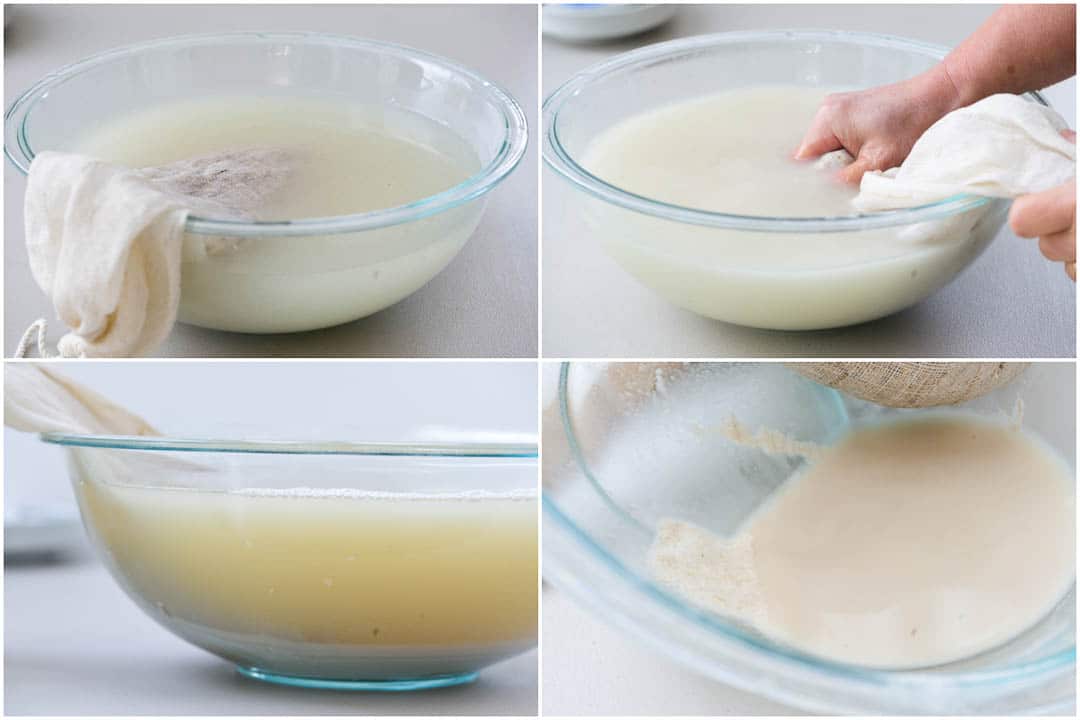

Using a fine strainer: Simply place the malt in a large bowl with 12 cups of warm water, and let it sit for 20 to 30 minutes. Rub the malt between palms and squeeze out milky liquid. Filter the liquid through a fine sieve. Then, squeeze the malt husks with your hands to drain out the remaining liquid through the sieve.
Let the malt water sit for a while. See the cheesecloth bag method above.
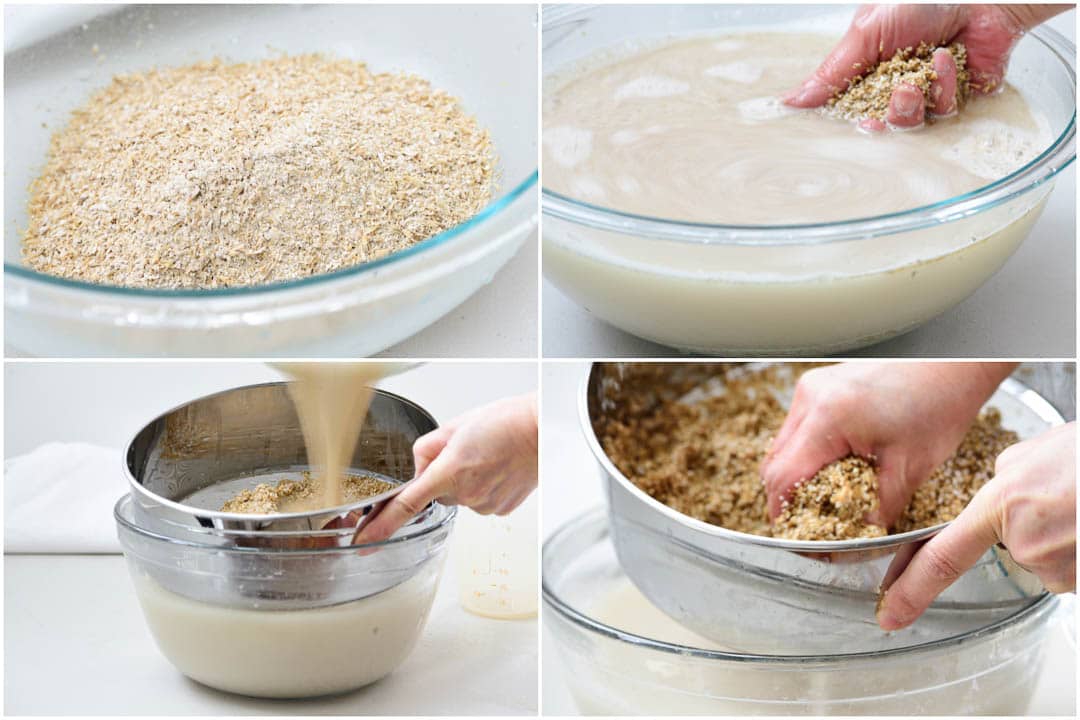

The spent malt barley still has a lot of potential. Place the bag (or the residual malt husks if you used a sieve) in another 12 cups (can be more or less) of warm water and repeat the process to squeeze out as much milky liquid as possible. Your rice cooker or Instant Pot is not big enough for 20 plus cups. The remaining malt water can be added at the boiling stage below.
Steeping
Combine the malt water with cooked rice and keep the mixture warm at the temperature around 140-150°F (60-65°C). This step allows the enzymes (amylases) in the malt to break down the starch in the rice into sugars (maltose) to create a sweet malty liquid.
Electric rice cooker: Since almost every Korean household has an electric rice cooker which has a “keep warm” function, Koreans typically use the rice cooker for this step.
When is it ready for the next step? The rule of thumb is it’s ready when about 10 rice grains float at the top. Another test is to rub a grain of rice between your thumb and index finger, the grain should roll like a piece of yarn not slippery starchy grain. This means the starch in the rice has been converted to sugar.
This step can take about 4 hours or longer, depending on the malt and your rice cooker. In my old 10-cup electric pressure rice cooker, it only took 3.5 hours. This is the minimum point, and it can be many more grains floating and more hours. So don’t worry about it if you forgot to check and left it for a couple of more hours.
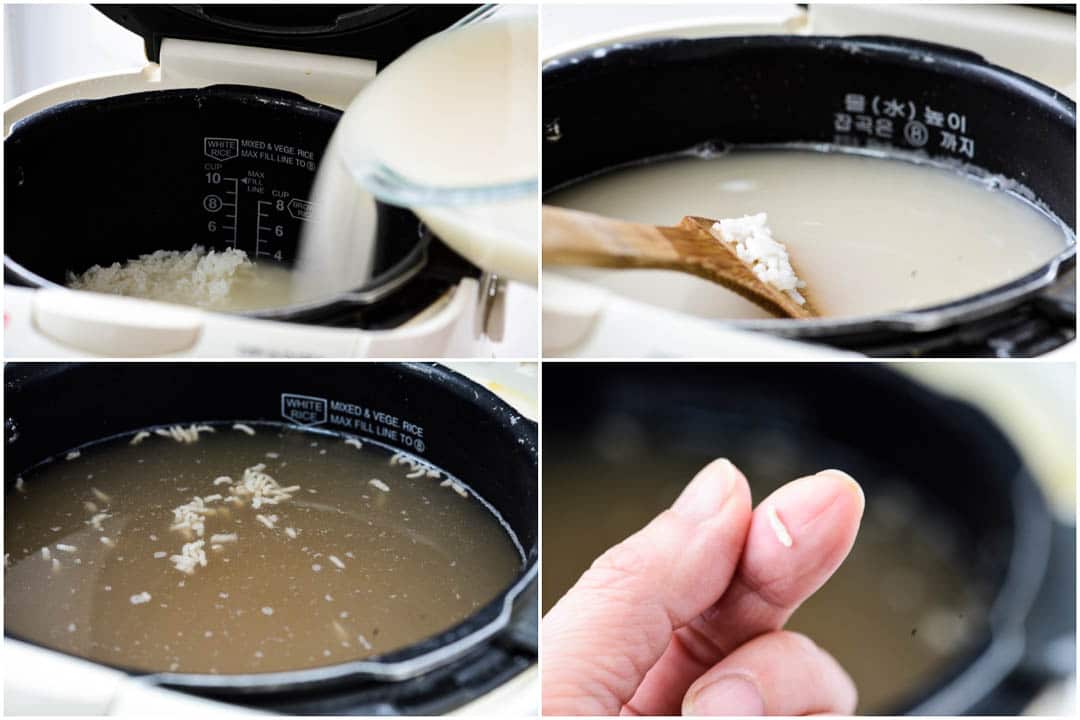

Instant Pot Sikhye: For those of you who don’t have a rice cooker with a “keep warm” function, I also tested it in the Instant Pot using the “keep warm” function. It works wonderfully!
If you don’t have either one, my oven at the “warm” setting worked nicely too.
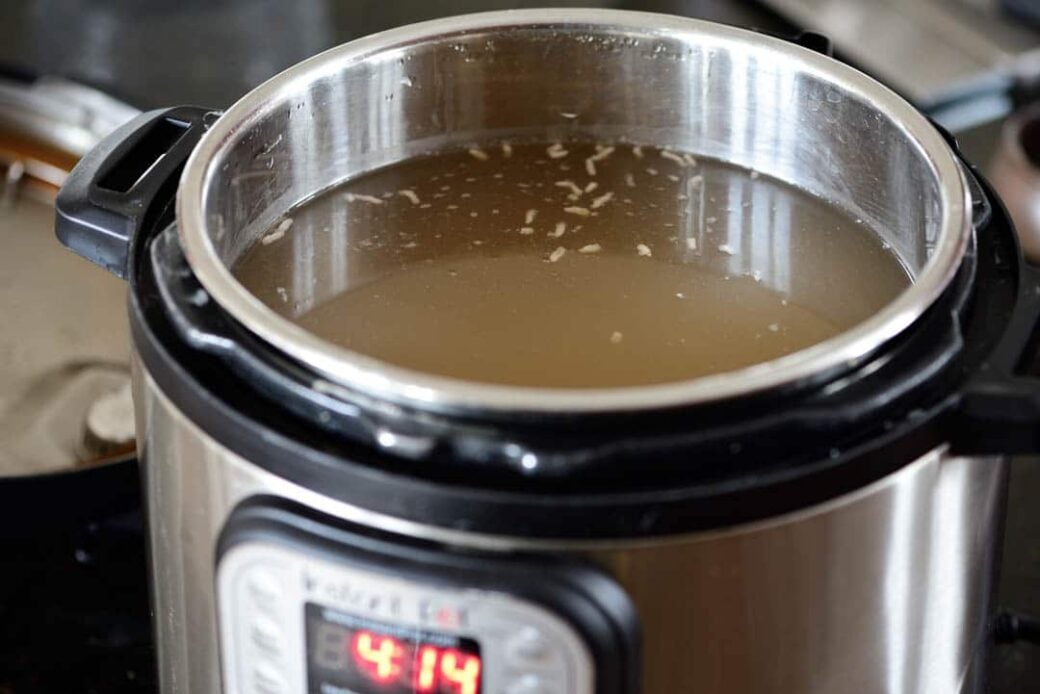

Boiling
The last step is to boil the malt liquid and rice. You can simply boil it in the rice cooker with the lid open or in the Instant Pot you used for steeping if that’s all the sikhye you want to make. Otherwise, I transfer to a stockpot so I can add saved extra malt water.
While boiling, add some sugar to taste. I also like to add a few ginger slices to add another layer of flavor but not enough to overpower the subtle malty flavor.
Variations
Danhobak sikhye
In Korea, sikhye made with danhobak, 단호박, (kabocha) is highly popular. I first tried homemade danhobak sikhye in a traditional market, called Kkangtong Sijang (깡통시장), in Busan many years ago. Since then, it’s been my favorite. You can simply cook the whole kabocha in the microwave, and puree it in a blender or with an immersion blender before adding it to the sikhye at the boiling stage.
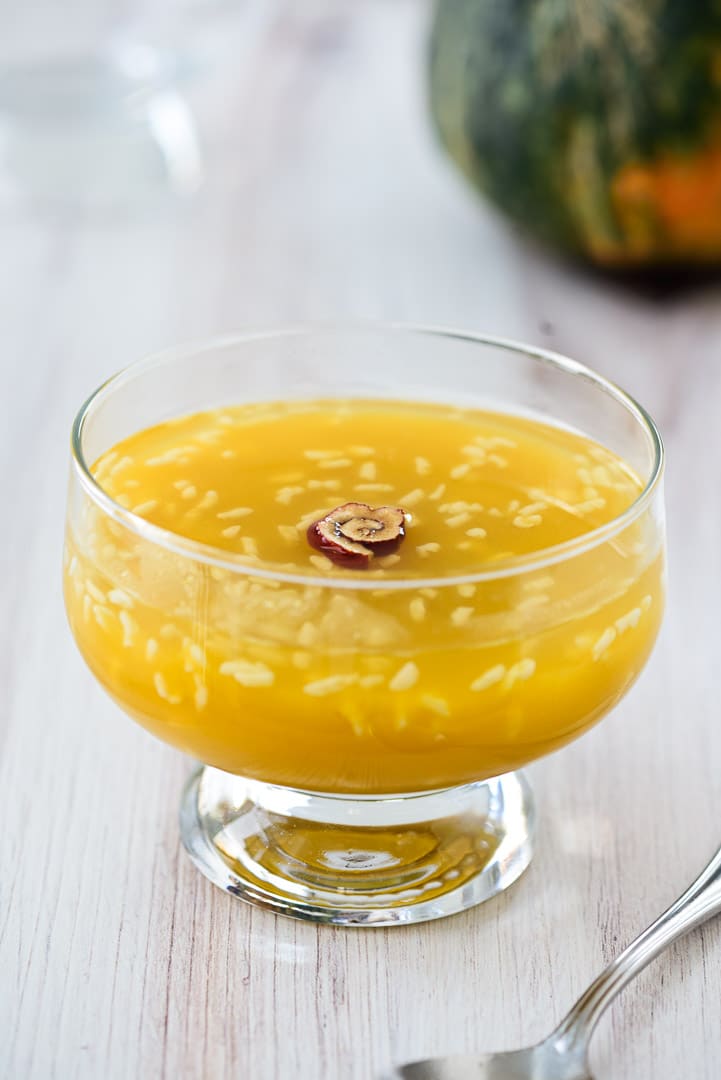

Purple sweet potato sikhye
This is my recent discovery. I usually have a bag of sweet potato powder (jasaek goguma, 자색고구마) for naturally coloring my songpyeon and for making latte. One day, I decided to use it in sikhye and loved the resulting color and taste. Simply add two or three tablespoons (or more to taste) at the boiling stage.
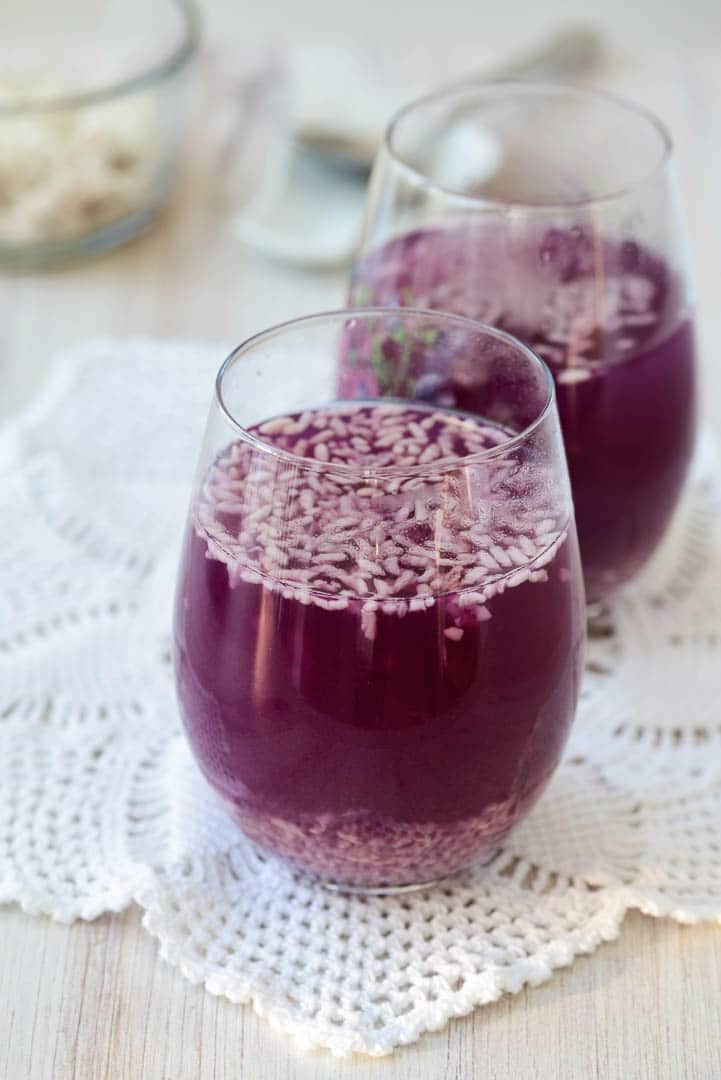

How to serve sikhye
In Korean homes, sikhye is typically served in a small bowl with floating grains of rice as well as pine nuts and jujube slices in some cases.
To make the rice grains float, they need to be rinsed in water and kept separately until ready to be served. This is only for a visual appeal. I’ve noted it as an optional step in the recipe.
You can also freeze it half way and break it up with a spoon or fork. You have sikhye slush!
Storing
Sikhye keeps well in the fridge for 5 to 6 days or longer. To be safe, you can boil it again after 5 or 6 days or freeze for longer storage.
I’m also testing bottling it. I sterilized the jars, fill the jars with the boiling hot sikhye all the way to the rim, and closed immediately. I’m going to keep the jars in the fridge for several weeks, and let you know if it worked.
UPDATE: The bottling worked beautifully. I kept the sikhye that was bottled in January 2022 in the fridge until April 2022 to test. All the bottles were still fresh and delicious!
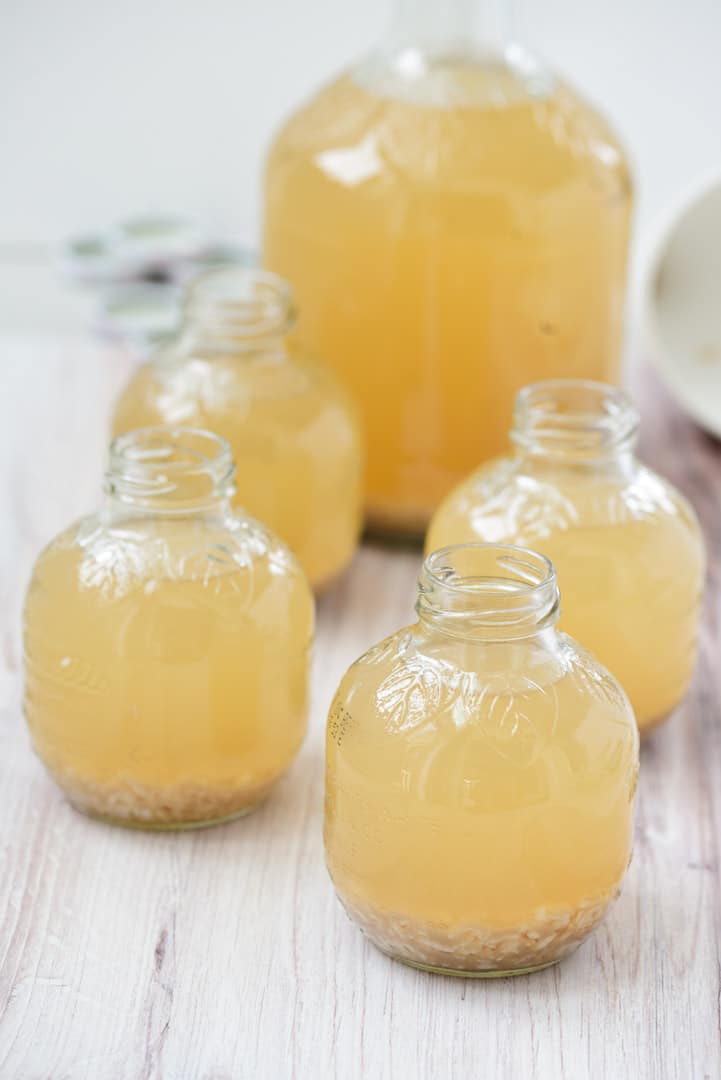

For more Korean cooking inspirations, follow along on YouTube, Pinterest, Twitter, Facebookand Instagram.
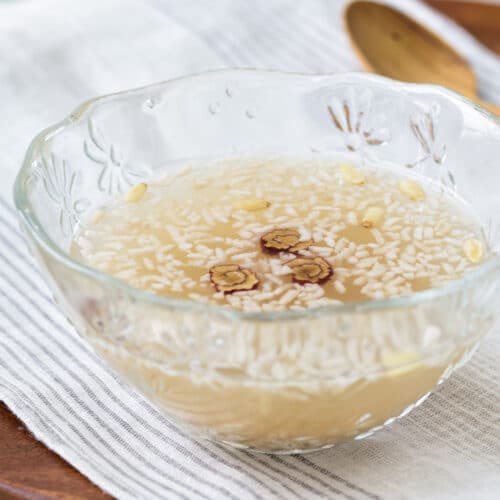

Ingredients
Variations (for 20 cups sikhye)
Instructions
Making malt water (Choose one of the two methods below)
Steeping
-
Carefully pour the malt water into the rice cooker, leaving the sediments at the bottom. Stir to combine the malt water, breaking up the rice clumps. My rice cooker can easily hold 18 cups of water. Close the lid and press the “keep warm” setting.
-
After about 4 hours, open the lid and check to see if about 10 rice grains float at the top. It can be many more. If not, close it and leave it for another 30 min to 1 hour (or longer) as necessary. A grain of rice between your thumb and index finger, the grain should roll like a piece of yarn, not slippery starchy grain, when ready.
Instant Pot Option
-
You basically do the same steps as noted above for the rice cooker. Start with cooking the rice in the Instant Pot using the “rice” function. Fluff it up, and gently add the malt water, leaving the sediments at the bottom. My 6 quart Instant Post can hold 18 cups of water. Stir well to break up the rice clumps. Close the lid, and press the “keep warm” button. Open and check in 4 hours. If there are about 10 rice grains floating, it’s ready to be boiled. This is the minimum point, and it can be many more grains floating and more hours. You can simply boil it in the Instant Pot using the sauté function if that’s all the sikhye you want to make.
Variations
-
Danhobak sikhye: Simply cook the whole kabocha in the microwave (about 10 minutes) until tender to touch, remove the skin, and puree the flesh in a blender or with an immersion blender with 2 cups of the malt water or sikhye.
-
Purple sweet potato recipe: Simply add 3 tablespoons of the purple sweet potato powder (or to taste) while boiling the sikhye.
Storing
-
Sikhye keeps well in the fridge for 5 to 6 days or longer, depending on your fridge. To be safe, you can boil it again for a few minutes after 5 or 6 days or freeze it in freezer bags for longer storage.

